The first week of May 2025 saw an important spiritual process, namely the selection of the new Pope. Leo XIV, by the eligible members of the College of Cardinals. Despite the political interest many countries have in the papacy, the spiritual process was followed according to the Roman Catholic tradition, without governmental interference, particularly from the Italian Government even though he also holds the title of Bishop of Rome.
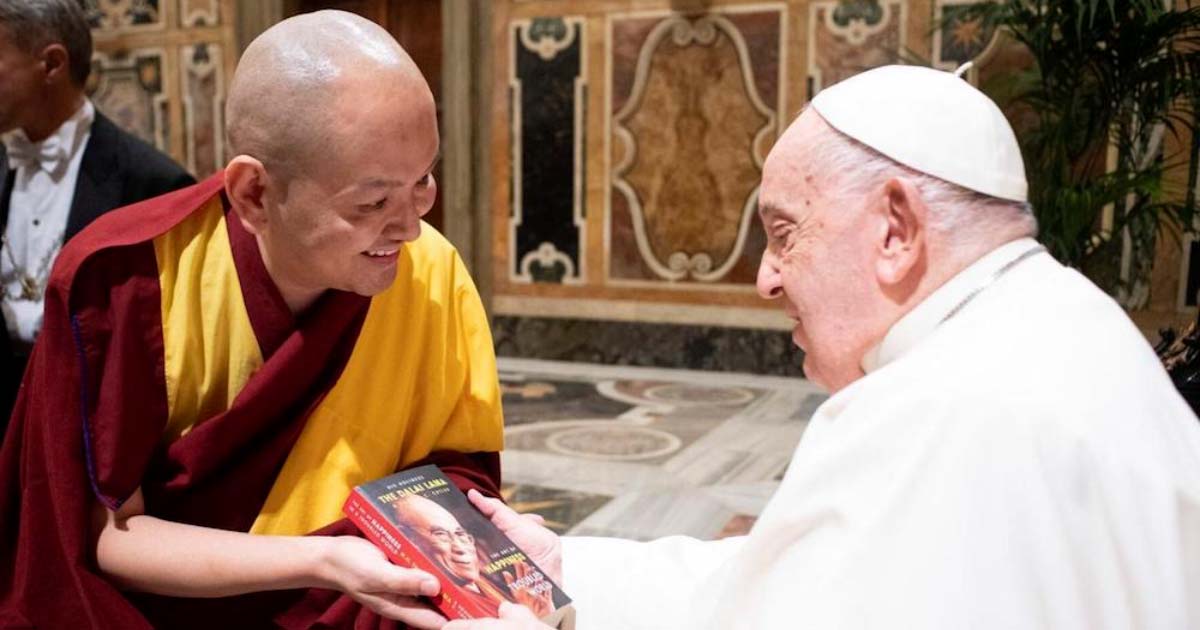
Pope Francis looking at a book by the Dalai Lama presented to him by Kundeling Tatsak Rinpoche during an All-Religion Conference held in Vatican City from November 29 to 30, 2024. (Photo: www.tibet.net)
Similarly, May is also significant in the modern history of Tibetan Buddhism, particularly in its system of reincarnation. May 14, 2025, marks the anniversary of His Holiness the Dalai Lama’s recognition in 1995 of a six-year-old Tibetan in Tibet as the 11th Panchen Lama Gedhun Choekyi Nyima. However, three days later, the Chinese authorities detained the young boy and he has not been seen in public since. Later that year, despite the absurdity of it, the atheist Chinese Communist Party thrust itself into a spiritual process and selected another Tibetan boy, Gyaltsen Norbu, as its Panchen Lama. Not only this, having occupied Tibet, the Chinese Communist authorities also display their imperialistic attitude towards reincarnation system of Tibetan Buddhism by claiming international authority.
Therefore, I want to talk about two recent developments relating to reincarnation of Tibetan Buddhist masters that provide an indication of its complexity, transnational ramification and the expanding category of stakeholders in the institution.
On April 7, 2025, the Foundation for the Preservation of Mahayana Tradition (FPMT), a post-1959 worldwide organization for the study of Tibetan Buddhism started by Lama Thupten Yeshi and Lama Thupten Zopa, gave an update to their members on the reincarnation of Lama Zopa who had died in April 2023.
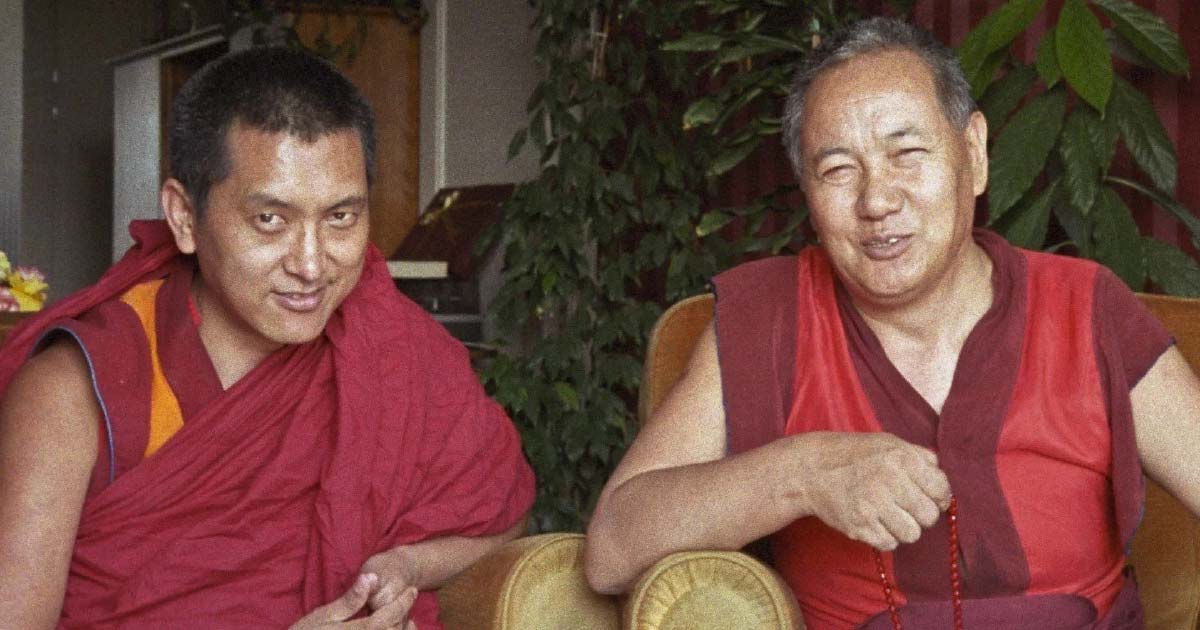
Lama Zopa (left) and Lama Yeshi. (Photo: www.fpmt.org)
In fact, Lama Yeshi had passed away way back in 1984. Although, Lama Yeshe had no history of being recognized as a reincarnation, his disciples had the ardent desire to benefit from his continued reincarnation and so it was Lama Zopa who did his preliminary investigations and then supplicated to His Holiness the Dalai Lama. Among the list of names of children that had been compiled was that of a Spanish boy, son of parents who were students of FPMT. Thus, in 1986, after spiritual divination, His Holiness recognized the Spanish boy as the reincarnation of Lama Yeshi (becoming among the first of reincarnation of Tibetan masters born to non-Tibetan western families). Named Lama Osel, he has subsequently given up his monkhood and is known as Tenzin Ösel Hita and being referred to as “a 21st-century radical freethinker, humanitarian, documentary filmmaker, musician, father, friend, life-long student, and former Buddhist monk.”
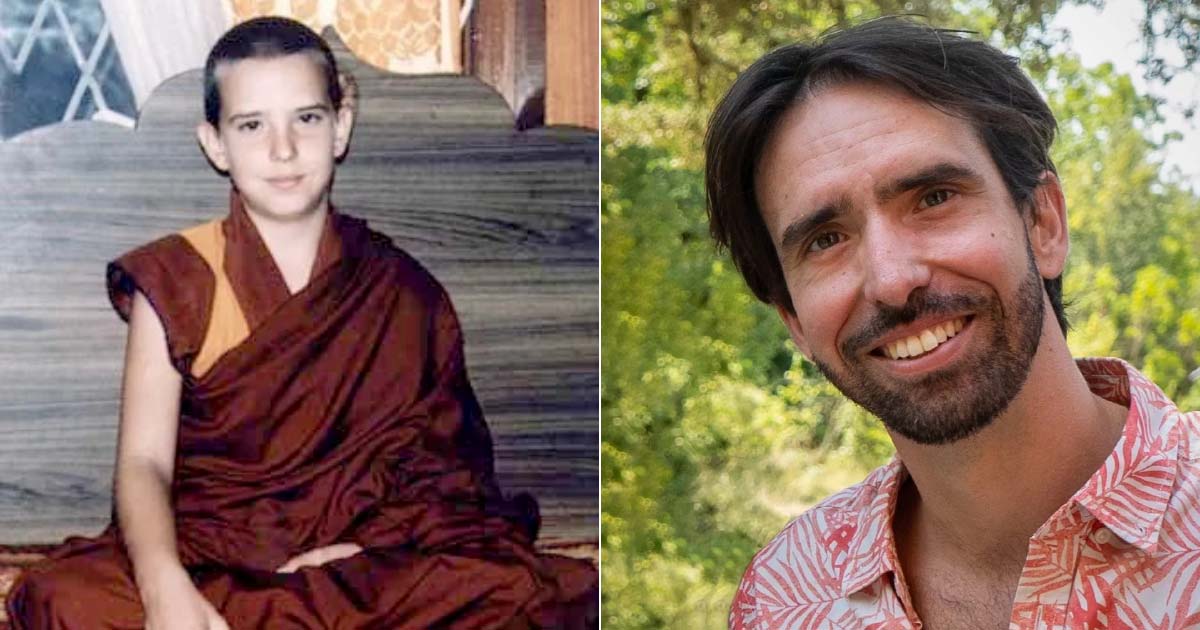
Then and now: Lama Osel and Tenzin Ösel Hita (Source: www.fpmt.org)
In any case, a reincarnation system began due to the followers displaying its benefit, and the reincarnation took place in a western child.
Now with the April 7 announcement by FPMT about the reincarnation of Lama Zopa has become another first. It was primarily to convey the good news of a response from His Holiness the Dalai Lama to their supplication for determining the status of Lama’s reincarnation. His Holiness, following his divination, had told them, “The reincarnation of Zopa Rinpoche shows to exist and that too appears to show inside Nepal, gradually look for and do the investigation.”
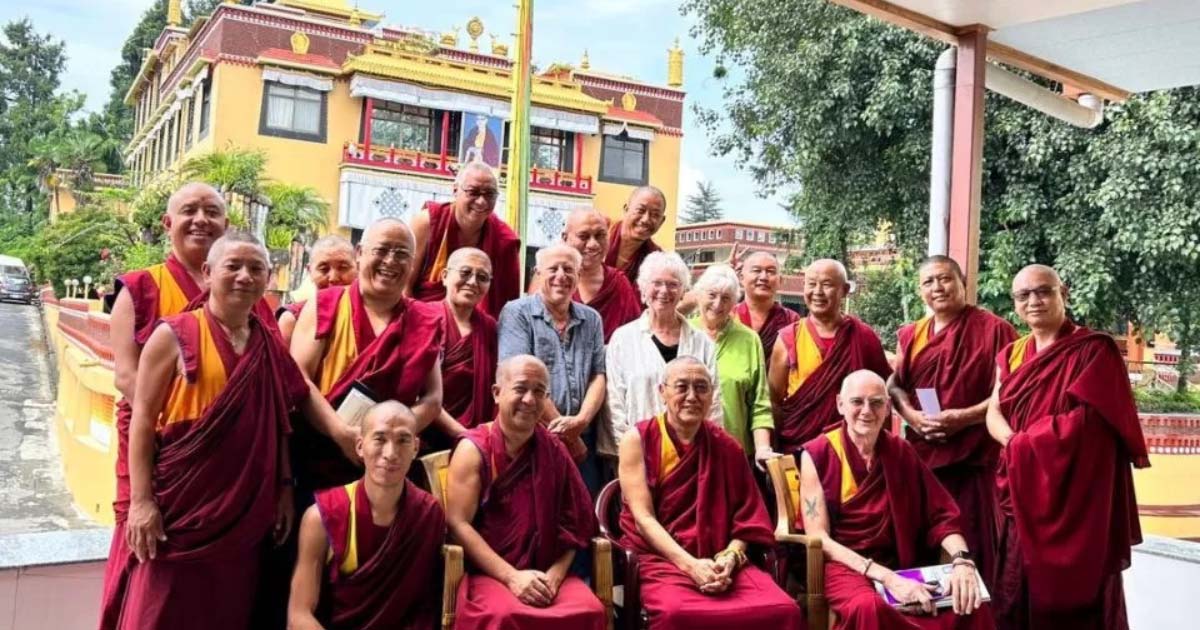
FPMT officials: Members of the search committee are Khenrinpoche Geshe Chonyi (sitting, center), Ven. Roger Kunsang (sitting, right), Ven. Thubten Pemba (standing first row, second left), Ani Tenzin Jangsem (standing first row, third right), Ven. Tenpa Choden (standing first row, third right), and Dale Davis (standing first row, fourth right) (Source: www.fpmt.org)
Along with this, they also had equally interesting information in that announcement: “The FPMT Inc. Board of Directors has appointed a search team: Khenrinpoche Geshe Chonyi, Ven. Roger Kunsang, Ven. Thubten Pemba, Ani Tenzin Jangsem, Ven. Tenpa Choden, and Dale Davis.” You would note that out of the six members, two (Ven. Roger Kunsang and Ms. Dale Davis) are Westerners who had become disciples of Lama Zopa several decades back and there are two women (Ani Tenzin Jangsem and Ms. Davis). This would certainly be the first time where Western Dharma students as well as female disciples are being formally involved in the search for the reincarnation of a Tibetan Buddhist master. Here, too, the FPMT is only exercising its authority on spiritual matters pertaining to their teacher. I am looking forward to seeing how this process unfolds.
In the post-1959 period, Tibetan Buddhism has seen followers beyond the traditional Himalayan and Mongolian communities. This meant that the stakeholders, including on matters like the reincarnation system, has also been expanding. Fundamentally, a lama can choose to be reborn anywhere to fulfill the aspiration of the disciples and so can do so. For instance, the birth of the 14th Dalai Lama in a faraway northeastern Tibetan region of Taktser in Amdo could be perceived as an intentional choice, including in spatial terms. We can see that he successfully overcame political and other impediments in the process of recognition and upbringing.
In the past four decades, quite a few senior lamas from different Tibetan Buddhist lineages have passed away. Some of them have chosen to be reborn in the Tibetan community, whether in exile or in Tibet. Some others have chosen to be reborn in the broader Himalayan community and including in western societies.
Another dimension of the transnational ramification of the reincarnation process was seen in 2022 when the reincarnation of an important Nyingma lama, Taklung Tsetrul Rinpoche, was found in a remote Indian village of Rangrik in Spiti, Himachal Pradesh. Rinpoche had been the head of the Nyingma tradition until his passing away in 2015. The people of Spiti are predominantly followers of Tibetan Buddhism and their region borders Tibet. Indian media reported in November 2022 that four-year-old Ngawang Tashi Rapten was recognized as the reincarnation of Taklung Tsetrul Rinpoche.
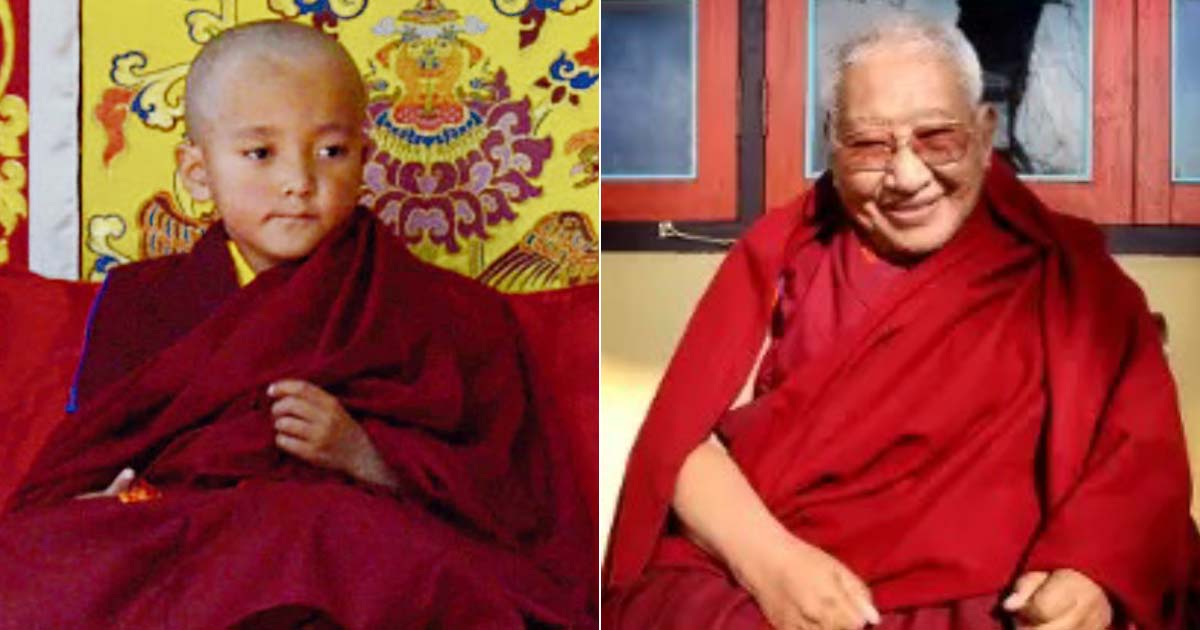
The present and previous incarnation of Taklung Tsetrul Rinpoche.
Given the background of the Taklung Tsetrul lineage, the new incarnation, an Indian citizen from an ethnic community near the Tibetan border, will be the leader of a major Tibetan Buddhist tradition. His Holiness the Dalai Lama composed a prayer in December 2015 for the swift rebirth of Taklung Tsetrul Rinpoche and also received the reincarnation for an audience in December 2022 thus providing any legitimacy needed for the spiritual community to accept him.
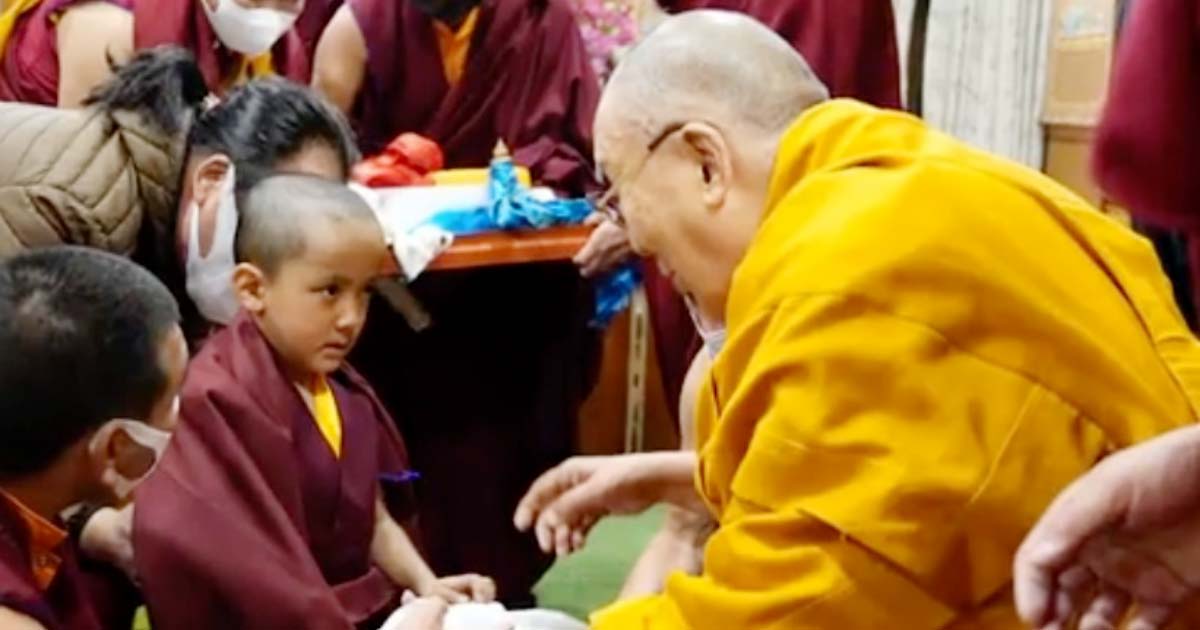
His Holiness received the reincarnation of Taklung Tsetrul Rinpoche in December 2022.
The reincarnation is now receiving his education at the re-established Dorje Drak monastery in Shimla, Himachal Pradesh.
Even when the system is not through reincarnation, we can see developments. In the Sakya tradition, in 2014, the then head of the tradition, Sakya Gongma Rinpoche from Dolma Phodrang lineage, decided with his spiritual colleague Sakya Dagtri Rinpoche from the Phuntsok Phodrang lineage to alter the system of throne-holder succession. In the changed system, members of both the Dolma Phodrang and Phuntsok Phodrang lineages serve as Sakya Trizin for a three-year term, according to their seniority and qualifications, and with the possibility that an office-holder may take office more than once in his lifetime. Since then, the position has passed through two sons of the Sakya Gongma Rinpoche. In all likelihood, the next Sakya Trizin could be a US-born lama from the Phuntsok Phodrang lineage.
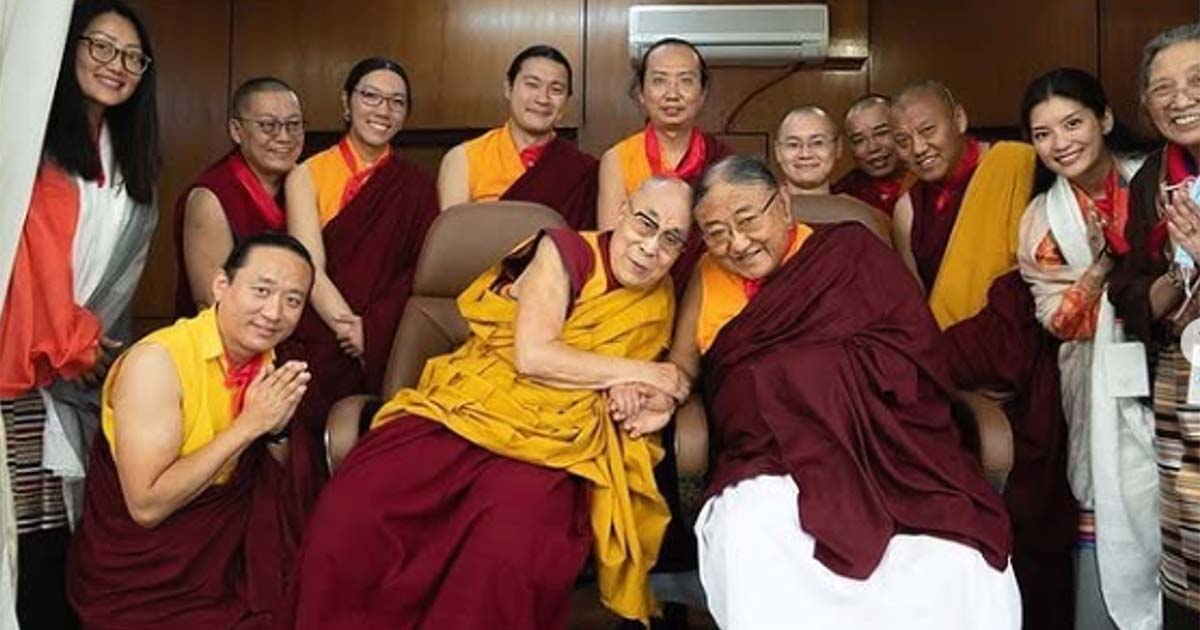
His Holiness the Dalai Lama with Sakya Gongma Rinpoche, his two successors and some possible future heads of the Sakya tradition, in Dharamsala, May 2022.
In the case of the Geluk lineage, a prominent lama from Ladakh, Rizong Rinpoche, rose up in the hierarchy of his monastic system to be appointed the 102nd Ganden Tripa, serving from 2009 to 2016. The Ganden Tripa is the senior most position in the Geluk school of Tibetan Buddhism and oversees all the monasteries of the lineage. The position is attained through a selection process based on scholarly excellence and spiritual integrity.
When spiritual tradition continues or evolves based on the determination of the spiritual community itself then we can see it emerging stronger. This is a lesson for all stakeholders of Tibetan Buddhism.
